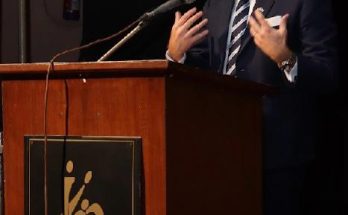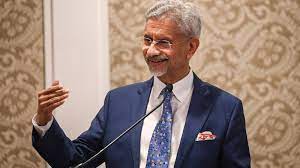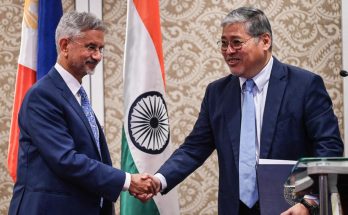 The world’s biggest carnival of democracy is in full flow. It’s a carnival in every sense of the word – in terms of sheer drama, spectacle and colour, along with all that hurly-burly and exuberant noise, the parliamentary elections in India have set new benchmarks that are hard to match anywhere else in the world. The statistics are staggering and overwhelm the imagination: 814.5 million Indians in a country of 1.2 billion people are eligible to vote in the 16th Lok Sabha elections that are being held in nine phases across India from April 7-May 12. The size of the electorate –- every adult Indian who is 18 (as on January 1, 2014) is free to choose his representative — exceeds the total population of the 28-nation European Union the US and South Asia minus India. Around 100 million people have been added to the voters’ roll since the last elections in 2009. And here are some more factoids that are truly mind-boggling: this year, there are 919,452 polling stations in which 814.5 million registered voters will use 1,878,306 electronic voting machines to choose candidates fielded by over 300 political parties.
The world’s biggest carnival of democracy is in full flow. It’s a carnival in every sense of the word – in terms of sheer drama, spectacle and colour, along with all that hurly-burly and exuberant noise, the parliamentary elections in India have set new benchmarks that are hard to match anywhere else in the world. The statistics are staggering and overwhelm the imagination: 814.5 million Indians in a country of 1.2 billion people are eligible to vote in the 16th Lok Sabha elections that are being held in nine phases across India from April 7-May 12. The size of the electorate –- every adult Indian who is 18 (as on January 1, 2014) is free to choose his representative — exceeds the total population of the 28-nation European Union the US and South Asia minus India. Around 100 million people have been added to the voters’ roll since the last elections in 2009. And here are some more factoids that are truly mind-boggling: this year, there are 919,452 polling stations in which 814.5 million registered voters will use 1,878,306 electronic voting machines to choose candidates fielded by over 300 political parties.
Logic and Logistics
The logistics of organising the elections on this scale are truly awe-inspiring, but the Election Commission of India, an autonomous constitutional body known for unimpeachable standards of integrity, has more than risen to the occasion to ensure free, fair and credible elections over 67 years of India’s independence. This year, the EC has deployed around 11 million-plus personnel to ensure the world’s largest democratic exercise goes off without a hitch. The EC has also been proactive in organising a string of awareness campaigns, roping in celebrities, to exhort Indians to exercise their franchise “in an informed and ethical manner” and treat voting as their sacred duty in the service of democracy.
The Lok Sabha elections in India, held every five years unless a mid-term poll is forced upon the nation due to compelling circumstances, are without doubt a stupendous blockbuster of democracy, a celebration of argumentative Indians and a veritable feast of pomp and polemics. Above all, the elections, based on universal adult franchise, is a great leveller in so far as all adult Indians above 18, be it a celebrity billionaire or an anonymous penniless bard, have one vote each to decide the fate of their aspiring rulers.
Global Media Frenzy
 Small wonder, the elections in India tease the global imagination like nothing else, and bring in hordes of journalists, paparazzi and plain curiosity-hunters who don’t mind braving the unforgiving Indian summer to have a first-hand feel of this rambunctious festival bristling with theatrics and eloquence. Going by the latest buzz, there are some 200-odd foreign correspondents who are criss-crossing the length and breadth of India and trying to unscramble what is clearly the most unpredictable and globally watched elections in the world. And these journalists represent some of the most powerful media networks in the world, ranging from behemoths like BBC, CNN, Bloomberg, Time, Sydney Morning Herald, Reuters, AFP, AP and Asahi Shimbun and Kyodo News to smaller media outfits from neighbouring countries like Jamuna Television and Banglanews.
Small wonder, the elections in India tease the global imagination like nothing else, and bring in hordes of journalists, paparazzi and plain curiosity-hunters who don’t mind braving the unforgiving Indian summer to have a first-hand feel of this rambunctious festival bristling with theatrics and eloquence. Going by the latest buzz, there are some 200-odd foreign correspondents who are criss-crossing the length and breadth of India and trying to unscramble what is clearly the most unpredictable and globally watched elections in the world. And these journalists represent some of the most powerful media networks in the world, ranging from behemoths like BBC, CNN, Bloomberg, Time, Sydney Morning Herald, Reuters, AFP, AP and Asahi Shimbun and Kyodo News to smaller media outfits from neighbouring countries like Jamuna Television and Banglanews.
The global interest in the 2014 elections in India is without parallel, and for a reason: given India’s growing diplomatic profile and the country’s increasing intertwining with the global economy, the world has a stake in who gets to rule India and what he or she stands for. The electoral arena this time is qualitatively different, and has come to resemble personality-oriented presidential-style campaigning: competing for the hearts and minds of over 800 million Indians are a former tea-seller turned political star of the BJP, the heir-apparent of India’s longest-running political dynasty representing the ruling Congress-led coalition and a maverick engineer-turned-anti-corruption crusader who aspires to change the old status quo politics of privilege that has been practised in this country for much of its independent history.
Election Tourism
One can understand journalists following the Indian elections with all the professional rigour and fervour they can muster, but this time round a new genre of election tourism is shaping up. Touted as the ‘Kumbh Mela’ of the world’s largest democracy, tourism industry impresarios and managers are offering election-themed holiday packages to foreign tourists. The sales pitch has apparently worked: Varanasi, the world’s oldest living cosmological city, is attracting droves of curiosity-struck foreign tourists, who are not seeking salvation, but are looking to experience the much-hyped electoral contest between the BJP’s prime ministerial candidate Narendra Modi and AAM Admi party chief Arvind Kejriwal. Ahamedabad is another hot favourite with a new breed of election tourists. Ahmedabad-based tour operator Election Tourism India is hoping to attract around 2,000 foreigners over the next few weeks till the last phase of polling ends on May 12.
Will foreign policy change?
While speculation is rife about possible policy changes by the new government formed after the elections, no radical changes are expected in the arena of India’s foreign policy. Going by the past, the governments have come and gone, but by and large an unwritten across-the-board national consensus on the country’s foreign policy has endured, with minor improvisations and modulations. This consensus includes pursuing a foreign policy based on enlightened national interest, good relations with neighbouring countries and extended neighbourhood, strategic autonomy, constructive engagement with major powers and emerging powers, promoting a rule-based international border, and vigorously enlarging the country’s developmental options through innovative and pragmatic diplomacy. Regardless of who forms the government in New Delhi after the votes are counted and the results are declared on May 16, the world can, therefore, expect some predictability and continuity in broad thrusts of India’s multi-layered relations with the world.
Keeper of Democracy Dream
In a world where democracy remains a distant dream for more than three billion people, the spectacle of the Indian elections, with its proven record of peaceful transfer of power over more than six decades, should be inspiring and a compelling argument against authoritarianism. Currently, more than 100 countries are technically democracies in so far as they hold elections to choose their rulers. The good news is that with every passing year, more countries are getting converted to the democratic fold. However, according to a report by The Economist Intelligence Unit, only 15 percent of countries enjoy full democracy and nearly a third of the world’s nations are ruled by authoritarian regimes. Against this backdrop, the exhilarating spectacle of millions of Indians voting to elect their rulers should be an exemplar. What’s more, the elections in India, despite the sheer magnitude of the exercise and mind-boggling diversity, have been remarkably free of violence or bloodletting, and have consistently scored high on credibility.
India Ink
But for all its justly-earned democratic credentials and its enduring belief in an inclusive democratic world order, India is not in the business of exporting democracy – proselytising is alien to the all-embracing Indian culture and ethos. India has, however, been prompt to render assistance in holding elections or democratic institution-building, but only on request. It may not be an exaggeration to say that the country’s fiercely argumentative and vibrant democracy has emerged as a role model for many countries across the world, ranging from Myanmar and Nepal in Asia to Egypt, Libya and Tunisia in North Africa. New democracies, especially those born in the aftermath of the Arab Spring, are now looking at the Indian model of democratic development for inspiration. From Afghanistan to Cambodia, India has been happy to send indelible ink, electronic voting machines or polling officers to train personnel in the business of conducting elections. Indelible ink, repository of democratic dreams, produced in Mysore, India’s southern city, has become the much sought-after charm by established and fledgling democracies. In the last three decades, Mysore Paints & Varnish Ltd has exported the ink to 28 countries across the world, including Turkey, South Africa, Nigeria, Nepal, Ghana, Papua-New Guinea, Burkina Faso, Canada, Togo, Sierra Leone, Malaysia and Cambodia.
In the near future, India looks set to retain the distinction as the world’s most populous democracy – an honour it will be all too happy to cede to China if the latter opts for electoral democracy. And the parliamentary elections in India will remain a veritable carnival and the keeper of the world’s democratic dream.
(Manish Chand is Editor-in-Chief of India Writes, www.indiawrites.org, an online journal and magazine focused on international affairs and the India Story).
Also watch a short film on Indian elections, World’s Biggest Carnival of Democracy : http://www.indiawrites.org/video/worlds-biggest-carnival-of-democracy/
https://www.youtube.com/watch?v=NOQhbgzoqvg&list=PLtvx15Sa2mhje8B2B6diyn3B7Vysx1sLB
Author Profile

- Manish Chand is Founder-CEO and Editor-in-Chief of India Writes Network (www.indiawrites.org) and India and World, a pioneering magazine focused on international affairs. He is CEO/Director of TGII Media Private Limited, an India-based media, publishing, research and consultancy company.
Latest entries
 India and the WorldMarch 3, 2024India-Denmark Connect: Red carpet for Indians to Red Sea cooperation
India and the WorldMarch 3, 2024India-Denmark Connect: Red carpet for Indians to Red Sea cooperation India and the WorldFebruary 17, 2024Munich Security Conference: Jaishankar, Blinken focus on Red Sea, Middle East
India and the WorldFebruary 17, 2024Munich Security Conference: Jaishankar, Blinken focus on Red Sea, Middle East India and the WorldFebruary 14, 2024Munich Security Conference report: Migration, war top security threats
India and the WorldFebruary 14, 2024Munich Security Conference report: Migration, war top security threats India and the WorldJanuary 23, 2024With “Ram to Rashtra” mantra, Modi consecrates Ram temple for national renewal
India and the WorldJanuary 23, 2024With “Ram to Rashtra” mantra, Modi consecrates Ram temple for national renewal







